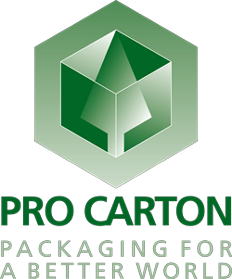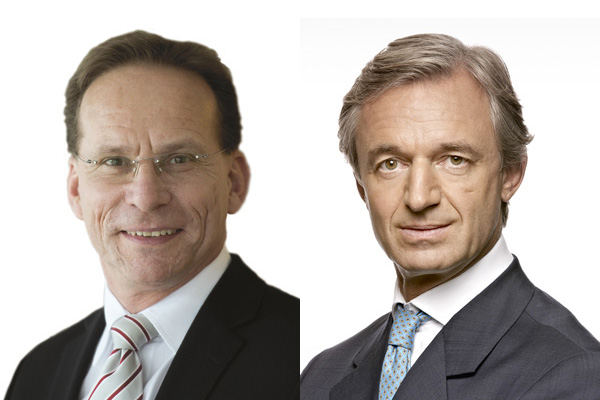Round Table discussion with Roland Rex (President Pro Carton) and Andreas Blaschke (President ECMA)
3 July 2017
RR – All indicators for private consumption are positive in Europe so the demand for FMCG packaging will grow. This will help to fill some of the spare production capacities. Changing shopping behaviour to a diversified omni-channel shopping environment and digitalization will both create new opportunities. I feel that industry consolidation will help create stronger, more cost efficient and innovative businesses which can fulfil our customers’ requirements and, importantly, be profitable.
AB – Volume should be good over the next year as the economy is picking up. Margins, however, remain under pressure since raw material prices are up and hard to recover. I don’t expect to see much further consolidation or largescale rationalisation in the short term as many companies have been through a period of change which is often followed by a period of integration and stability.
2. What’s the biggest challenge that the carton industry faces right now?AB – I think it’s the mismatch between customer expectations and supply chain capabilities. Board lead times are getting longer whereas carton customers want more flexibility and shorter lead times and decline to tie up working capital in stock. We need to find new solutions without adding cost.
RR – There are a lot of challenges which are affecting our industry. Many of them are good and helpful which we do not wish to slow down but rather maintain the pace in getting better. But there is one challenge which seems to be greater than the others. This is the rapidly growing overcapacity in our market which is only growing moderately. We have to change our mind set from “more of the same” to “make the same better”. This is a healthier way for growth than just “more”.
3. How do you think carton converters and board mills could work better together?RR – The most important thing is to understand that one depends on the other. There are no cartons without cartonboard and vice versa. So a positive and profitable cooperation for both partners in the supply chain must be achieved. This demands a certain degree of openness and trust and the willingness to really cooperate to develop business together in a profitable and innovative way.
AB – We need to find a way of aligning our supply chains better whilst taking out costs and I believe there are a still a lot of opportunities for us to work together on cost reductions. Also, converters and mills might co-operate more on developing special boards for selected major end users.
4. What’s your view on the constant adverse publicity that the plastic industry is getting regarding waste and polluting the oceans?AB – The board and carton industry really has a great opportunity to speak loudly about its positive environmental credentials and must continue communicating its strengths and benefits. It’s all about sustainable forestry, renewable resources, compostability and ease of recyclability.
RR – Consumers – at least in Europe – are starting to understand that packaging is important, but that plastic packaging is a serious problem for the environment. They understand to differentiate between packaging that is made from a renewable or recycled material and packaging which is using fossil resources and is littering rivers, lakes and seas, and not only on other continents. This is a great opportunity for cartonboard and cartons to position ourselves as the most sustainable packaging option with a double positive effect on climate and reuse. The more often plastic is criticised by public opinion leaders, the better for us.
5. Are the demands of the brand owners and retailers changing?RR – The needs of the retailers and brand owners have always been changing. The difference now is the speed of change. Digitalization is driving our lives and rapidly changing our business models, so that it is essential to be in close contact with those sitting in the driver’s seat helping us to predict what is coming next. Omni-channel retailing with individualised and personalised packaging is coming quickly.
AB – Demand has become more volatile, less predictable and lot sizes are getting smaller. Retailing is changing and moving more on-line. Some of our customers need to find new ways to respond to these opportunities especially those involved in impulse purchase categories which are harder to promote on-line. I’m thinking here for instance of products like confectionery that are often merchandised at the checkouts and cashiers.
6. With the continual use of e-tenders and e-auctions do you think that price is becoming less of a factor in making supply decisions?AB – Price is still a big factor and we need to continue to find ways of taking out costs. There’s lots that can be done. As for tenders and e-auctions, they are well established now and I hope that most players are sufficiently experienced in how to manage them, which wasn’t the case 5 or 7 years ago.
RR – Price was and will always be an important aspect in regard to the purchasing decision. This is why we constantly have to work on cost reductions throughout the carton supply chain. But new ways of promoting products will offer new opportunities for packaging combined with new services for carton makers. We have to get away from a “cost plus x” thinking towards “what’s the benefit for my customer” that he is prepared to pay for, approach. Digitalisation will require flexibility along the packaging supply chain, which will enable us to review our pricing policies.
7. How important is innovation in the carton industry?AB – Innovation is high on everyone’s agenda and it’s a good way of differentiating. However, in practice, relatively few new ideas are actually adopted and really taken to the market. In my experience, real innovation is at its best when the carton converter has a proven and long term business relationship and really understands the consumer needs.
RR – Innovation is what our customers expect from us and therefore it is essential for the future of our businesses. Originally packaging was only used to protect the product from damage or loss. Then the marketing aspects were added, so today it is well understood that packaging plays a vital role in the purchasing decision of the shopper. And in the future packaging will become the communication tool throughout the supply chain eliminating unnecessary costs and shortening process times.
8. What impact have recent and upcoming political changes had on the industry and your business?RR – There were and will be always unexpected developments which affect our businesses – not only political ones. So if you have a solid and broad base, you will easily overcome periods of uncertainty. And every risk offers new opportunities too, you’ve got to be open minded and think positively.
AB – The biggest impact has been on the exchange rates creating new challenges. Otherwise I don’t think too much has really changed or will change as far as our industry is concerned from a political point of view.
9. If you could change one thing about the industry what would it be?RR – We have to change our perspective. We should not always try to understand and explain the world from our own position but we must understand the world from our customers and our customers’ customers’ point of view, so that we really develop products and services which help our customers in their business environment. This will reflect positively on us and make us indispensable. If we continue focussing on our own processes and internal activities we will either always be running behind or will be ignored by those who are essential to us, our customers.
AB – I’d like to change the perception of our product. We need to move from packaging being just a cost towards packaging as a way of adding value. Actually, cartons are the greatest material for branding any product!
10. Do you have a final message for your members?RR – I agree with Andreas that we have to keep on telling people that packaging is a value and not only a cost, and that cartonboard packaging is the best option available, due to its sustainability advantages. Plastic is for losers – cartons are for winners, because cartons do not create plastic waste.
AB – You can read into this what you like, however my message is to resist any temptation and avoid being impulsive.
Thank you gentlemen.



